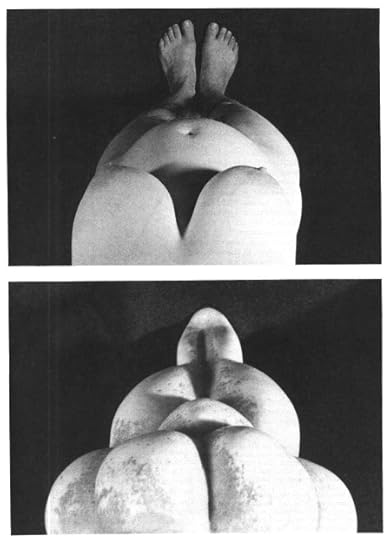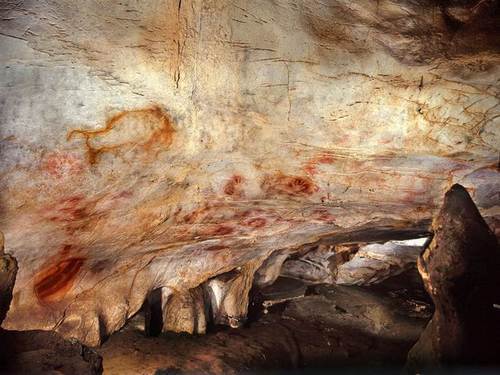erikawithac:
a-golden-lasso-of-my-own:
Yay! Feminist...


Yay! Feminist Anthropology time!
Prehistoric Cave Prints Show Most Early Artists Were Women
Alongside drawings of bison and horses, the first painters left clues to their identity on the stone walls of caves, blowing red-brown paint through rough tubes and stenciling outlines of their palms. New analysis of ancient handprints in France and Spain suggests that most of those early artists were women.
This is a surprise, since most archaeologists have assumed it was men who had been making the cave art. One interpretation is that early humans painted animals to influence the presence and fate of real animals that they’d find on their hunt, and it’s widely accepted that it was the men who found and killed dinner.
But a new study indicates that the majority of handprints found near cave art were made by women, based on their overall size and relative lengths of their fingers.
"The assumption that most people made was it had something to do with hunting magic," Penn State archaeologist Dean Snow, who has been scrutinizing hand prints for a decade, told NBC News. The new work challenges the theory that it was mostly men, who hunted, that made those first creative marks.
Another reason we thought it was men all along? Male archeologists from modern society where gender roles are rigid and well-defined — they found the art. "[M]ale archaeologists were doing the work," Snow said, and it’s possible that ”had something to do with it.”
I added the emphasis in bold, but the “that” was already italicized in the article, and it’s probably my favorite part. I love this article, although I’m not a huge fan of the fact that it’s considered so incredibly shocking and radical to imagine that women possibly participated in society 40,000 years ago.
In other awesome feminist anthropology news: it is now somewhat accepted that the venus sculptures, rather than being depictions of female beauty by male artists, were self-portraits by women looking down at their own bodies. The paleolithic figurines lose their distorted proportions and acquire representational realism if we understand that they are self-portraits created by women looking down at their own bodies.
See also: This quote by Sandy Toksvig
When I was a student at Cambridge I remember an anthropology professor holding up a picture of a bone with 28 incisions carved in it. ‘This is often considered to be man’s first attempt at a calendar’ she explained. She paused as we dutifully wrote this down. ‘My question to you is this – what man needs to mark 28 days? I would suggest to you that this is woman’s first attempt at a calendar.’
It was a moment that changed my life. In that second I stopped to question almost everything I had been taught about the past. How often had I overlooked women’s contributions? How often had I sped past them as I learned of male achievement and men’s place in the history books? Then I read Rosalind Miles’s book The Women’s History of the World (recently republished as Who Cooked the Last Supper?) and I knew I needed to look again. History is full of fabulous females who have been systematically ignored, forgotten or simply written out of the records. They’re not all saints, they’re not all geniuses, but they do deserve remembering.
the willendorf sculpture and others like her were /the first selfies/ and its amazing



